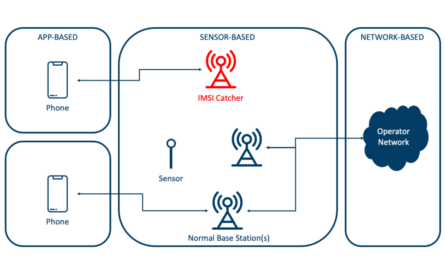
What is QC?
Quantum cryptography, also known as quantum key distribution (QKD), is a method for secure communication that uses quantum mechanics principles rather than mathematical algorithms. At its core, it relies on the fact that observing a quantum system, such as a photon, changes its state in unpredictable ways. This property, known as quantum entanglement, allows for detection of eavesdropping or tampering with the transmission.
How Does QC Work?
In QC, a quantum key is distributed between two authorized users, traditionally called Alice and Bob. The key is generated by sending random numbers encoded onto quantum states, such as the polarization of individual photons. Since observing photons alters their quantum state according to the Heisenberg uncertainty principle, any attempt to intercept or copy the transmission disturbs the quantum states in a detectable way.
Once the quantum transmission establishing the cryptographic key is complete, the key can then be used through a one-time pad encryption scheme to securely transmit digital messages. Because intercepting the key transmission itself would introduce detectable errors, the one-time pad encryption provides unconditional security against eavesdropping.
Real-World Applications and Implementations
While QC was originally conceived in the 1980s, technological challenges limited real-world applications until recently. Now, with advances allowing preservation of quantum properties over longer distances through optical fibers or free-space links, QC networks are being deployed for both research and commercial use.
Some notable current quantum key distribution networks include:
– A 450km QKD link between Beijing and Shanghai established by Chinese researchers in 2020 to encrypt VoIP calls.
– A SwissQuantum consortium operating a QKD network connecting several cities and financial institutions across Switzerland since 2009.
– The Tokyo QKD Network run by NEC connecting downtown Tokyo buildings since 2016 for encrypted database access.
– The UK Quantum Network project working to incorporate QKD into the UK National Data Infrastructure by 2025.
Many telecom providers and tech giants are also actively developing QKD systems targeting both regional and continental scale quantum networks within the next decade. Widespread deployment could make quantum-secured communication infrastructure ubiquitous.
Advantages over Traditional Cryptography
While traditional public key cryptography based on mathematical problems like factoring large prime numbers or computing discrete logarithms provides security today, rapid increases in computing power raises concerns about future vulnerabilities as quantum computers develop. In contrast, quantum cryptography is based on the laws of physics rather than computational assumptions.
Potential vulnerabilities in traditional methods include:
– Shor’s algorithm allows quantum computers to efficiently solve problems like integer factorization and discrete logarithms that current cryptography relies on.
– Grover’s algorithm allows quantum search of an unstructured database exponentially faster than classical computers. This weakens security of symmetric key ciphers.
QC is theoretically secure against quantum attacks because eavesdropping itself introduces detectable errors. It provides a future-proof solution that can still guarantee encrypted communication even after development of quantum computers. This makes QC an attractive long-term solution for applications requiring cryptographic agility.
Challenges and Limitations
While promising in theory, widespread adoption of QC faces technical challenges that researchers continue working to resolve:
– Distance – While QKD links of over 400km have been demonstrated through optical fiber or free space, distances remain limited compared to classical networks. Repeaters are needed to extend range.
– Key generation rate – Current systems provide low key generation rates on the order of kilobits per second or less, below requirements for many applications. Faster processors and photon sources are needed.
– Infrastructure compatibility – Integrating quantum networking capability into existing telecom architectures requires significant development effort. Standards and components are still emerging.
– Security assurances – Rigorous security analysis and certification standards are still maturing to provide high confidence in implementation and operation of QC networks and devices.
In Summary, nonetheless, quantum cryptography represents a highly promising approach to future-proof secure communication as classical cryptanalysis techniques are vulnerable to quantum computing. With ongoing research and development, its limitations will continue to fall and adoption will likely scale significantly in the coming decade.
*Note:
- Source: Coherent Market Insights, Public sources, Desk research
- We have leveraged AI tools to mine information and compile it



